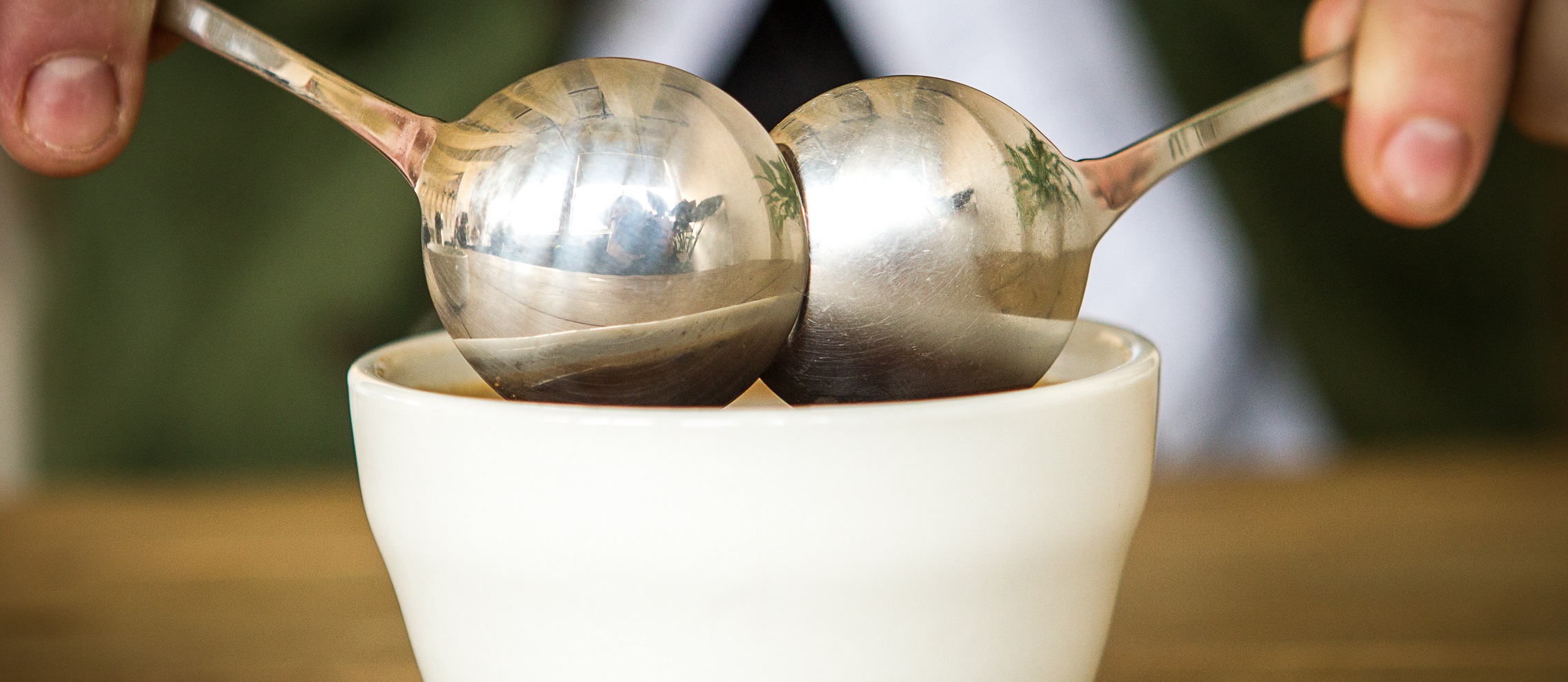
For many people coffee drinking is a ritual, a habitual practice that they enjoy without appreciating it. Routine drinkers may be commuting to work, checking their emails or chatting with friends – whatever they’re doing, their attention is not on the coffee itself.
But once you step back from your daily life and focus on the cup at hand, your appreciation will increase and you will start to understand that coffee is more than a drink. It’s been referred to as a science and an art, yet everyone has the ability to learn how to truly appreciate it.
The first thing to remember when you taste coffee is that there’s right or wrong answer – everyone’s palate is different and recognises different flavours and aromas.
Before a coffee is placed in front of a customer in a coffee shop, that coffee will have been tasted several times – by the roaster, café owner and perhaps even beforehand to spot any defects. This tasting method is known as cupping.
What is cupping?
Cupping offers a way to evaluate the characteristics of a particular coffee bean to understand its taste and how best to brew it to ensure maximum flavour.
When you first cup coffee, start with two coffees that are very different as this not only gives you a comparison but will help you to pick out crucial variations.
How to cup coffee
Weigh out equal amounts of each coffee and place them into two separate small bowls or cups, before pouring over near boiling water and leaving the coffee to steep for approx. 3-4 minutes.
After this time, it’s important to break the crust – the layer of floating grounds – by stirring it gently. This will cause some of the grounds to sink to the bottom of the bowl and you should skim off any remaining before tasting the coffee.
Leave the coffee to cool down slightly so that you can taste the flavours more easily, but don’t forget to take this opportunity to smell the coffee as this will give a taste of what’s to come.
While you may be a little self-conscious about the next part, don’t worry about slurping coffee. Slurping helps to aerate the coffee and disperses it across your palate – bring your spoon of coffee to your mouth and suck the coffee in, drawing the coffee to the roof of the mouth so it then falls on your tongue and the back of your mouth. Swirl the coffee in your mouth and try to focus on what you can taste.
Tasting the coffee
This can be intimidating but it’s not a contest and you should say what you think (and taste). Can you distinguish florals, berries or caramel? Is it sweet or bitter? What about the second cup – how does that one differ?
The Counter Culture Coffee Flavour Wheel can be quite useful if you’re a bit unsure how to describe it, but try to use your own words. Once you’ve finished, have a look at the tasting notes on the coffees that you used and compare with your own. This will also help to extend your coffee-tasting vocabulary.
Find out more the art and science of cupping in Gallery 2 at The House of Coffee & Co.
There are 0 comments